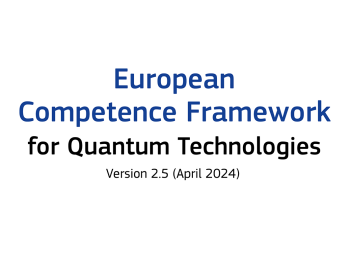In an article published in Nature Nanomaterials a team of researchers from 2DSIPC demonstrates that slightly twisted 2D transition metal dichalcogenides (TMDs) display room-temperature ferroelectricity. This characteristic, combined with their outstanding optical properties, can be used to build multi-functional optoelectronic devices such as transistors and LEDs with built-in memory functions on a nanometre length scale.
Ferroelectrics are materials with two or more electrically polarisable states that can be reversibly switched with the application of an external electric field. This material property is ideal for applications such as non-volatile memory, microwave devices, sensors and transistors. Until recently, out-of-plane switchable ferroelectricity at room temperature had been achieved only in films thicker than 3 nanometres.
Since the isolation of graphene in 2004, researchers across academia have studied a variety of new 2D materials with a wide range of exciting properties. These atomically thin 2D crystals can be stacked on top of one another to create so-called heterostructures - artificial materials with tailored functions.
More recently, a team of researchers from the Flagship's 2DSIPC project at the University of Manchester’s National Graphene Institute and the National Physical Laboratory has demonstrated that below a twist angle of 2o, atomic lattices physically reconstruct to form regions (or domains) of perfectly stacked bilayers separated by boundaries of locally accumulated strain. For two monolayers stacked parallel to each other, a tessellated pattern of mirror-reflected triangular domains is created. Most importantly, the two neighbouring domains have an asymmetric crystal symmetry, causing an asymmetry in their electronic properties.
In the work, the team demonstrated that the domain structure, created with low-angle twisting, hosts interfacial ferroelectricity in bilayer transition metal dichalcogenides. This indicates that the twist degree of freedom allows the creation of atomically thin optoelectronics with tailored and multi-functional properties.
The team went on to develop a scanning electron microscope (SEM) technique with enhanced contrast, using signals from back-scattered electrons. They applied an electric field in-situ, while imaging changes to the domain structure in a non-invasive manner, providing essential information on how the domain switching mechanism works. Researchers saw that the boundaries separating the oppositely polarised neighbouring domains expanded and contracted depending on the sign of the applied electric field, leading to a significant redistribution of the polarised states. This demonstrated reliable ferroelectric switching at room temperature.

Lead author Astrid Weston comments, “It’s very exciting that we can demonstrate that this simple tool of twisting can engineer new properties in 2D crystals. With the wide variety of 2D crystals to choose from, it provides us with almost unlimited scope to create perfectly tailored artificial materials.”
As Dr. Eli G. Castanon, co-author of the study adds, “Being able to observe the pattern and behaviour of ferroelectric domains in structures that have nanometre thickness with KPFM and SEM was very exciting. The advancement of characterisation techniques together with the extensive possibilities for the formation of novel heterostructures of 2D materials paves the way to achieve new capabilities at the nanoscale for many industries.”
Cited article: Weston, A., Castanon, E.G., Enaldiev, V. et al. Interfacial ferroelectricity in marginally twisted 2D semiconductors. Nat. Nanotechnol. 17, 390–395 (2022). https://doi.org/10.1038/s41565-022-01072-w
--
This news was originally published at the University of Manchester newsroom and edited for clarity.



